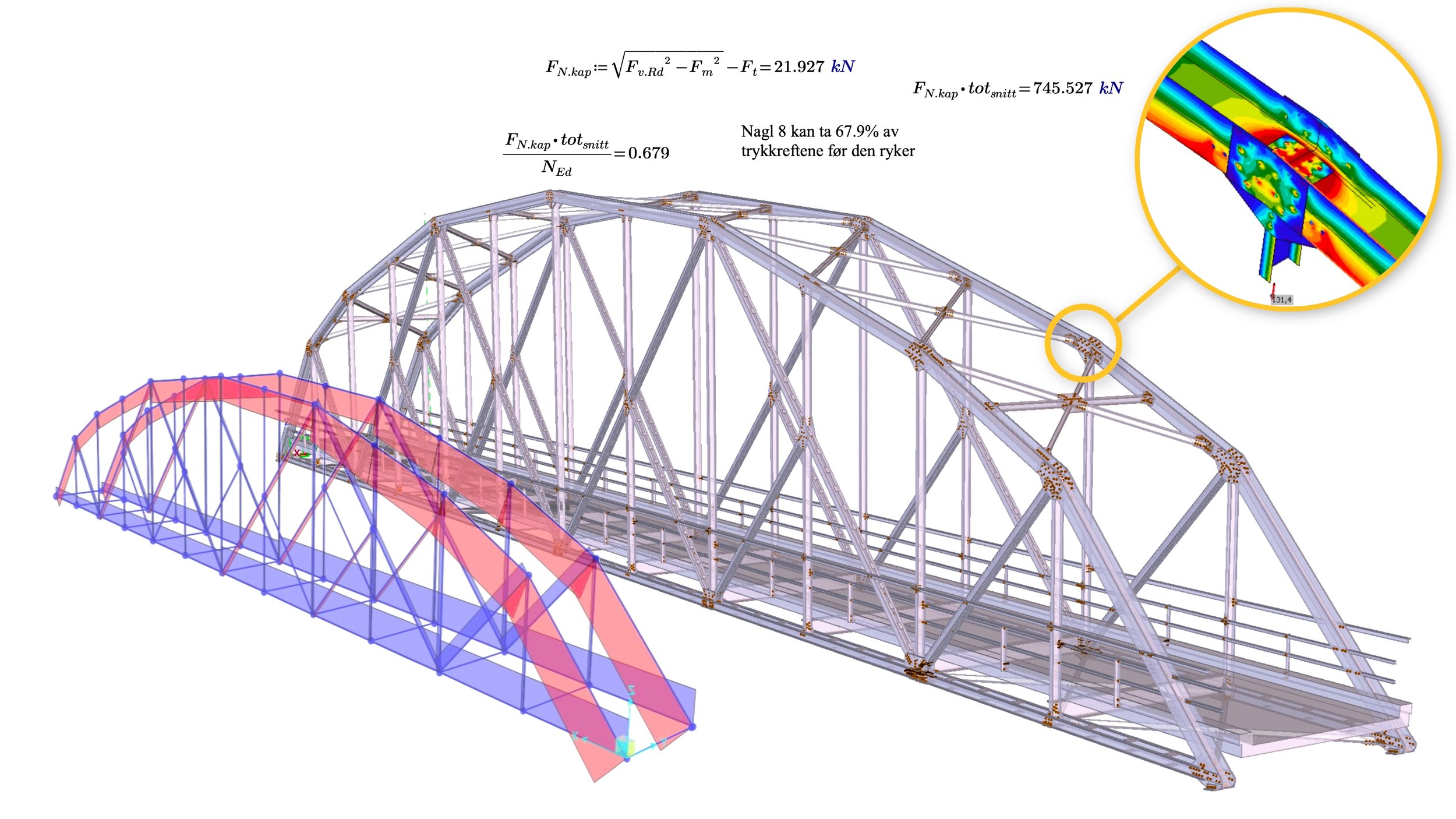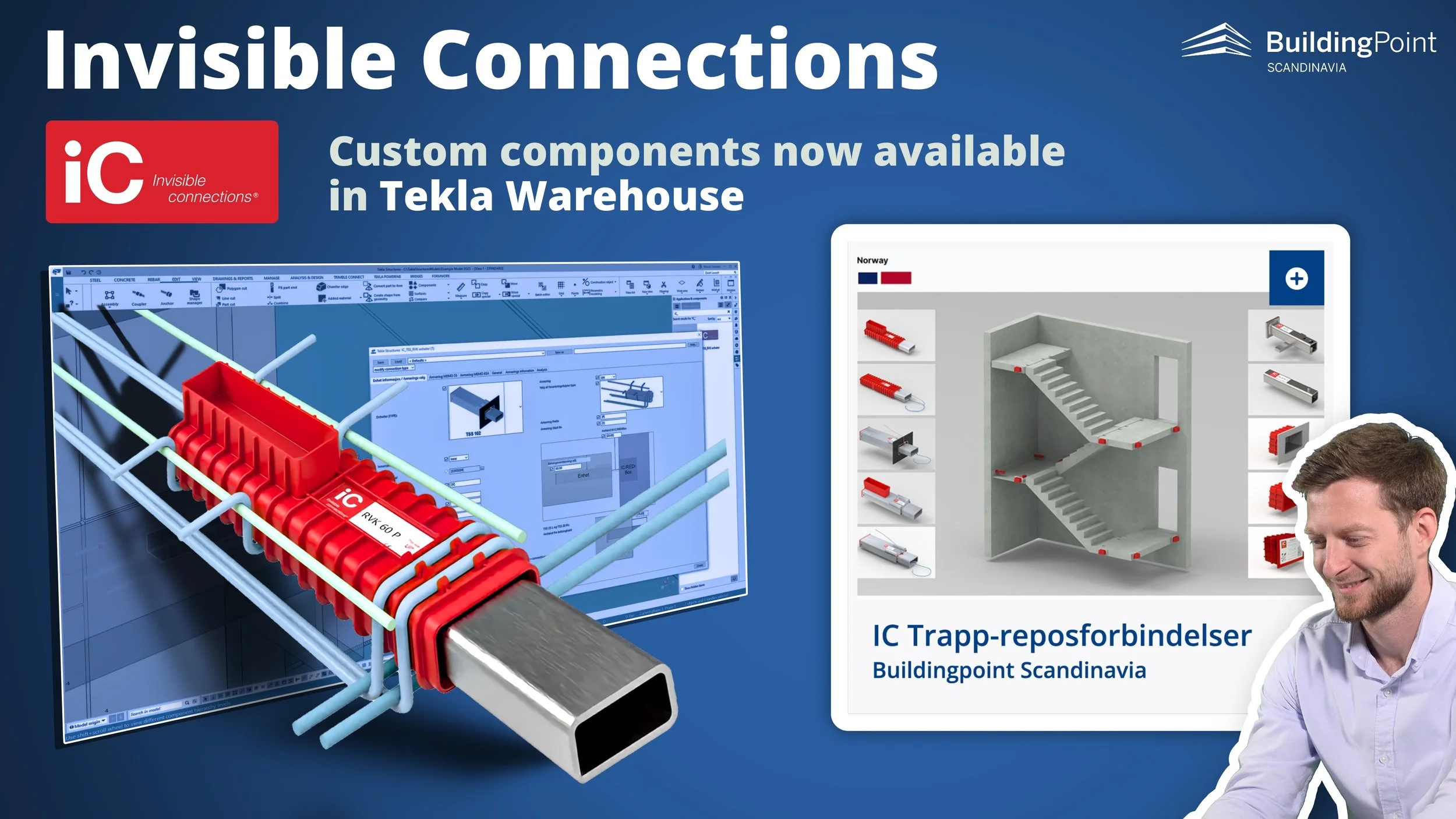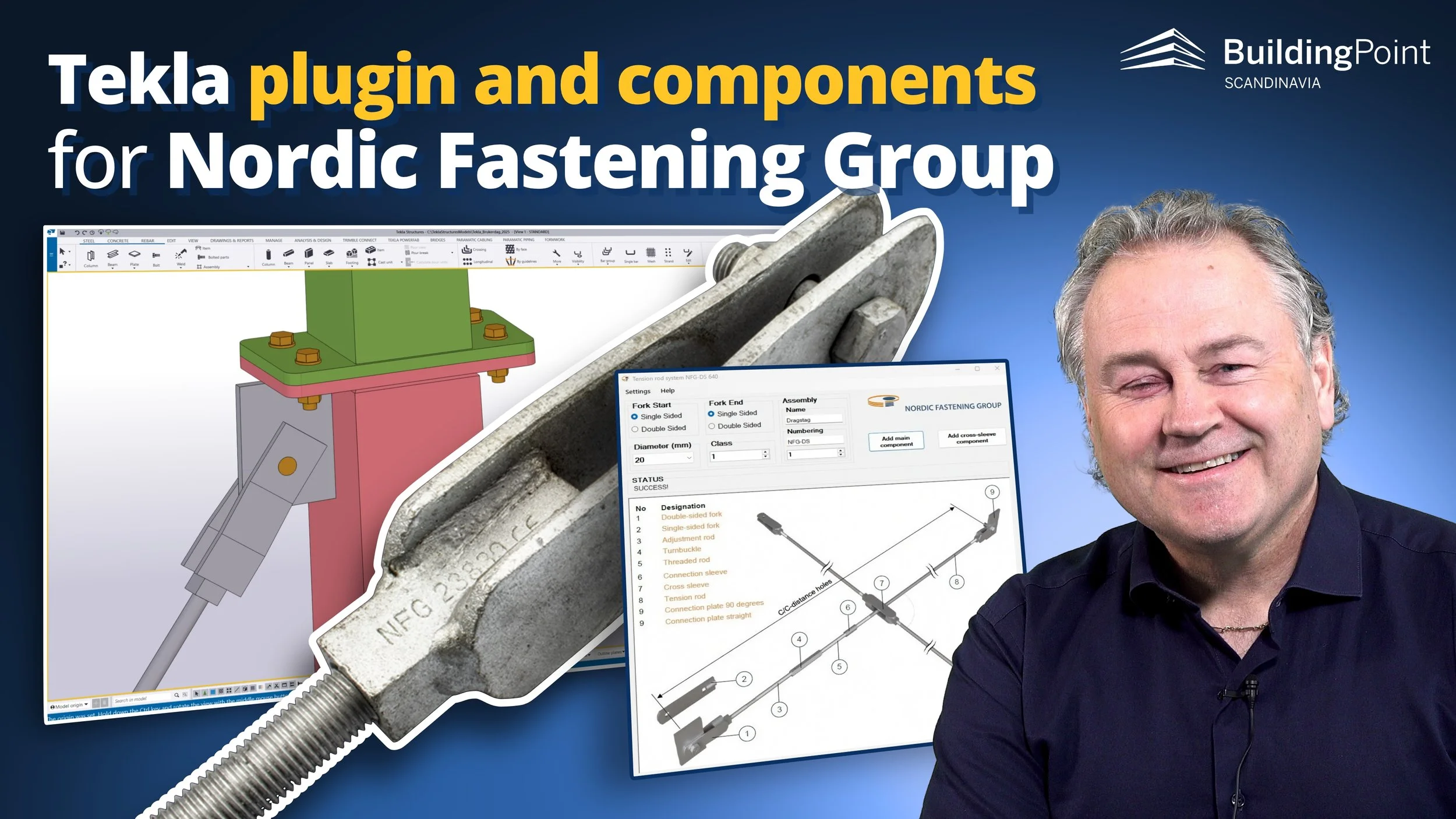The teaching challenge: Balancing theory with practical applications
ILLUSTRATION: Jøssund Bro, Tekla Structures Model, SAP2000 analysis, and connection detail calculation with IDEA StatiCa, as well as hand calculations on a single rivet/bolt in the connection. All images are from “Design evaluation, rehabilitation and suggested alterations to existing structure, Jøssund Bro”, a bachelor thesis by students at NTNU, (ref.) used with permission.
Engineering students often struggle to balance theoretical learning and practical applications. Jomar Tørset, an Assistant Professor at NTNU's Marine Civil Engineering department, stresses the importance of integrating practical engineering skills, including software proficiency, into the curriculum.
While theoretical emphasis is key in universities, Tørset advocates for including practical examples to engage students and accelerate their understanding. Drawing from his industry experience, he uses software like Tekla Structures, SAP2000, and IDEA StatiCa to bridge the theory-practice gap, enabling students to apply knowledge effectively in the field.
Marine Civil Engineering
The Marine Civil Engineering group in Department of Civil and Environmental Engineering at NTNU specializes in Arctic Offshore and coastal technology, offshore wind technology, and coastal technology. They explore how natural elements like sea conditions, ice, wind, currents, and waves impact the design and operation of marine structures.
Marine Civil Engineering is vital for sustainable coastal development, encompassing infrastructure related to design and fabrication, transportation, geotechnics, GIS, and marine structures. Understanding the marine physical environment is crucial, especially in areas like the Norwegian coast with its unique challenges due to rough underwater terrain.
And students from NTNU are the future engineers that will deal with these challenges!
Theory or practice?
At the universities there is an emphasis on theoretical topics in the curriculum, and that is where the evaluation criteria are focused. However, when entering their first job in engineering, some students find that they are not equipped with all the skills needed to do the job. This is a common issue and employers generally provide fresh graduates with training to get them up to speed on specialist software needed for engineering tasks.
Jomar Tørset, Assistant Professor at NTNU, appreciates the fact that the students can spend time on theory at school, but in his opinion the practical engineering skills, and in particular knowledge of some of the popular software solutions that engineers use in daily life, is something that should be included in the training to a higher degree:
«It is not only an educational challenge in terms of how much the students absorb and understand when you teach engineering if you do everything theoretically ... it is a challenge to keep the students motivated! I find that including practical real-life examples accelerates the understanding AND it makes the teaching situation more engaging», Tørset says.
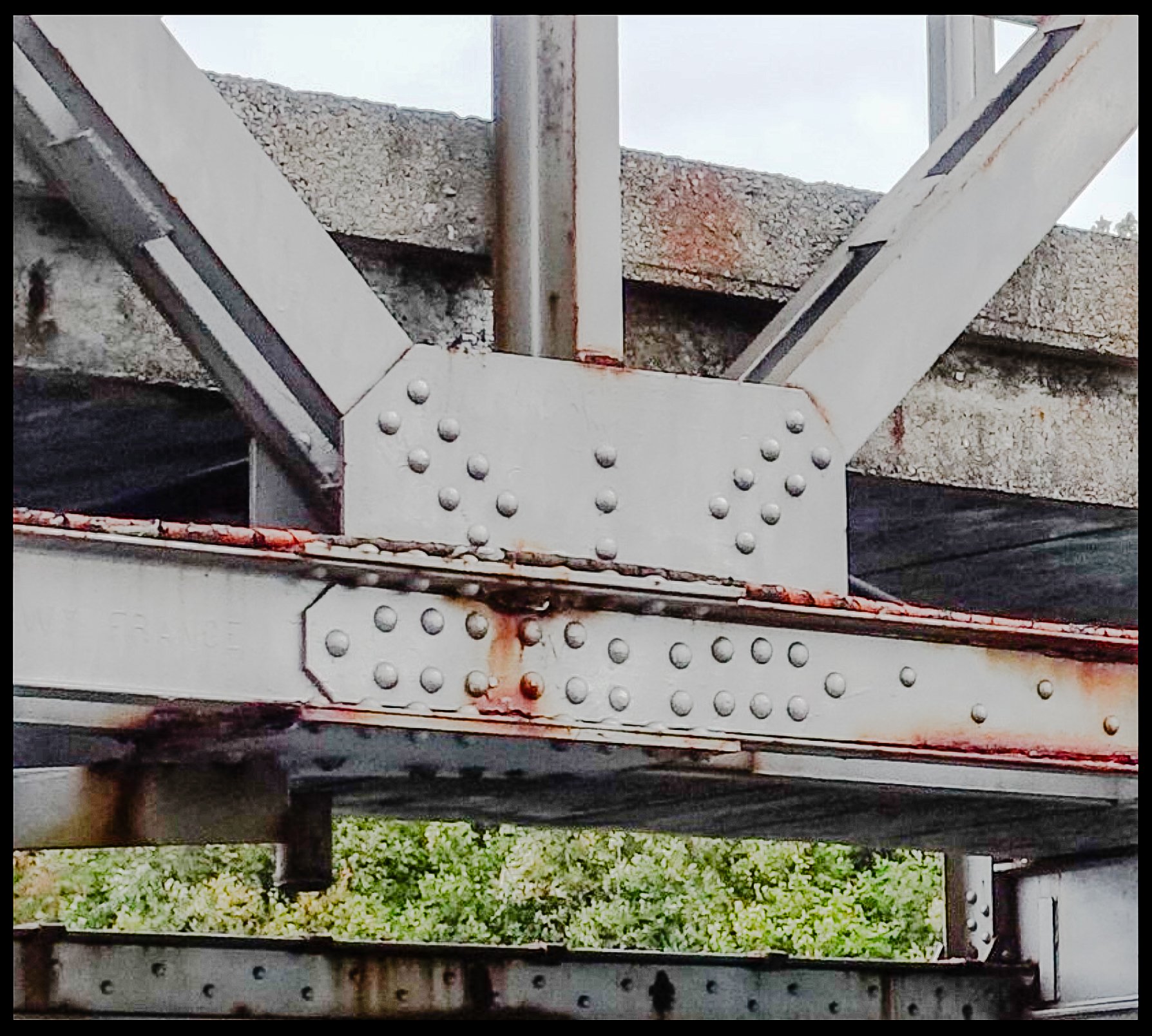

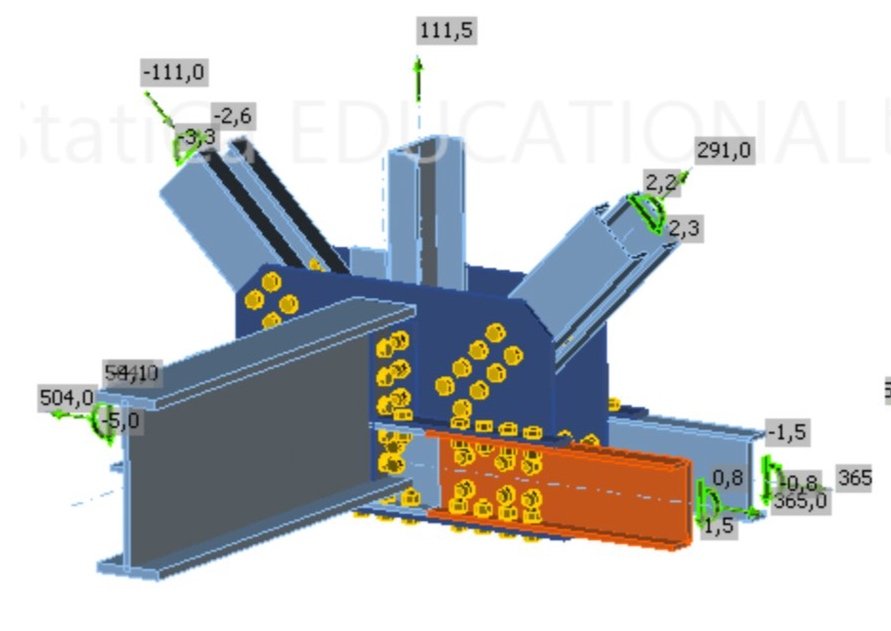
IMAGES: Close-ups of a riveted and bolted steel connections in a bridge, modelled in IDEA StatiCa (source).
Solutions for Educators
BuildingPoint Scandinavia offers software and training programs for educators for Tekla, IDEA Statica, scanning solutions, mixed and augmented reality… and more!
Industrial experience
With a background from companies like Aker Solutions, Aibel, Multiconsult, Vegdirektoratet (Norwegian Road Authorities) and a private company, Tørset has extensive experience with marine and mechanical engineering. Among the skills he has relied on during his career, you find design and analysis, and it is in that field he currently teaches.
“
I have found that a software package for 3D modeling, global analysis as well as detail analysis is needed to give the students insight into all steps in design and analysis structures, like bridges or marine equipment.
With this suite of solutions, I can very quickly create examples that help the students understand what they need to know when it’s their turn in the industry!
- Jomar Tørset, Assistant Professor, NTNU
Through his teaching he tries to bridge the gap between theory and real-world practice to increase the student’s ability to apply knowledge effectively in the field.
«I have found that a software package for 3D modeling, global analysis as well as detail analysis is needed to give the students insight into all steps in design and analysis structures, like bridges or marine equipment. I’ve been using Tekla Structures for the 3D modeling, SAP2000 for the global analysis of steel structures, and IDEA StatiCa for connections design, like bolted and welded connections. With this suite of solutions, I can very quickly create examples that help the students understand what they need to know when it’s their turn in the industry», Tørset explains.
Tørset hasn’t made it mandatory to use the software in his classes but says that he strongly believes that the students that take advantage of the available software has a steeper learning curve and takes away knowledge that are more easily applied once they graduate and start their first job.
«An advantage with software simulations with tools like IDEA StatiCa, or general-purpose FEA for that matter, is to visualize local effects that are not possible to capture in hand calculations. That is one of the reasons why I find that using software tools integrated in the teaching contributes to accelerated learning for the students”, says Tørset.
“
A
n advantage with software simulations with tools like IDEA StatiCa, or general-purpose FEA for that matter, is to visualize local effects that are not possible to capture in hand calculations.
- Jomar Tørset, Assistant Professor, NTNU
Tørset underscores that software shouldn’t replace hand calculations. However, by employing software for visualizing and discussing typical technical challenges, students learn the importance of utilizing spreadsheets and hand calculations to verify the accuracy of inputs in software - and vice versa.
«The students generally find their way in the software quite easily. It isn’t hard to use the software once you understand what you want to achieve – and that’s an important part of the learning experience», Tørset remarks.
How is this approach to teaching in line with the university’s ambitions?
EXAMPLE REPORT: “Design evaluation, rehabilitation and suggested alterations to existing structure, Jøssund Bro”, a bachelor thesis by students at NTNU using Tekla Structures, SAP2000 and IDEA StatiCa, as well as hand calculations to model and analyse the bridge.
In the field of Marine Civil Engineering the university is training students to deal with issues related to offshore wind, waves, and other challenges. Particularly in our part of the world, issues like build-up of ice on marine structures can be a problem. Dealing with the design of structures in these conditions requires understanding of loads, and how to model them mathematically – and practically in software systems.
«It is natural that engineers continue to learn after they graduate, that’s what it’s like to be an engineer! However, when we consider the needs of smaller companies hiring fresh graduate engineers, we find that the bachelor level engineering graduates have a better start of their careers when they bring practical skills to the first day at the job», Tørset says and points to student projects using Tekla, SAP2000 and IDEA StatiCa as great examples that showcase the level of knowledge the students demonstrate.
Although debates persist within the faculty about the emphasis on theoretical versus practical learning, the agreed goal remains to equip graduates with both skill sets.
Tørset's approach aims to strike a balance, recognizing that practical skills significantly benefit engineering graduates as they embark on their careers.
- END -
RELATED LINKS
OTHER ARTICLES

